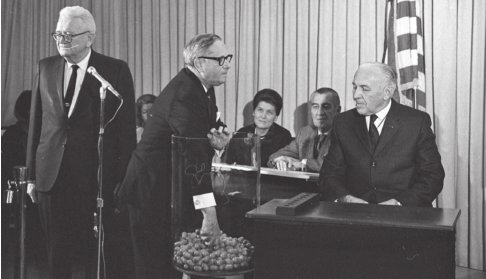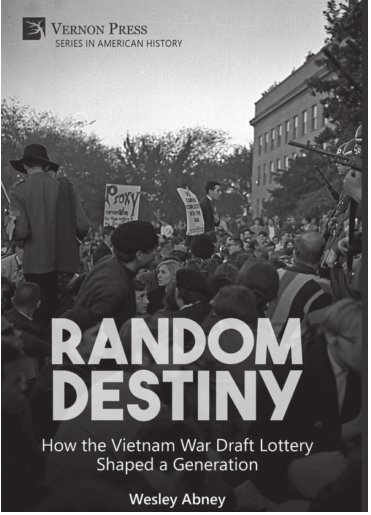 The 1969 draft lottery seemed like a good idea to level the playing field for young men facing the draft. In a single night, all males, ages 19-26; born between 1944 and 1950, would receive a supposedly random number tied to their birthday, which would determine their exposure to the draft. The “winners” of the lottery, born June 8, received No. 366. The losers were born Sept. 14, and received No. 1.
The 1969 draft lottery seemed like a good idea to level the playing field for young men facing the draft. In a single night, all males, ages 19-26; born between 1944 and 1950, would receive a supposedly random number tied to their birthday, which would determine their exposure to the draft. The “winners” of the lottery, born June 8, received No. 366. The losers were born Sept. 14, and received No. 1. It was simple in its design. Beginning in 1970, and depending on need, men would be called in numerical order from numbers one through 366, but only those classified I-A or I-AO at the time would be exposed to the draft, and only for that one year. In the first year, 195 numbers were called for military service.
However, there would be a plethora of exemptions ranging from medical, religious convictions, holding a job in the national interest, or even being too fat or too skinny. Homosexuality or wearing braces could also put you on the sidelines along with the ubiquitous I-S, the student deferment. Some exemptions lasted for life, while others, like the student deferment, lasted only as long as they were relevant.
Author Wesley Abney in his new book:
“Random Destiny: How the Vietnam War Draft Lottery Shaped a Generation,” illustrates how this single night would set in motion a series of decisions that would forever determine the future and outlook of the more than 1,893,000 men who received their number on the first draft of the Vietnam War.
Abney began his interest in the outcome of the draft on individuals in 2006 after a conversation between him and his friends.
“I hadn’t thought about the draft lottery in 30 years, but we both vividly remembered our numbers,” he said.
“I thought someone could make a good book out of lottery stories,” Abney said.
In the age of the internet, he thought the best way to discover those stories was to create a website where individuals could post their stories. Over the next few years, thousands did, and continue to do so on www.vietnamwardraftlottery.com.
Abney said he thought most posts would be about the panic experienced by college boys watching the lottery at frat houses.
“The responses were much more nuanced,” he said. “I felt like I wanted to lay out the rules for the game and then feature stories about how the game was played by individuals. ” What he found out was the rules for the draft, although in black and white, were applied differently across the country and by individual draft boards.
Abney then categorized the postings as they applied to the most frequently mentioned outcomes, such as the medical exemption. He then used the posts to show how the rules were actually applied. Males eligible for the draft will recognize many of their own often convoluted machinations to avoid the draft.
Some were straightforward like, “go to Canada,” or “get braces.” Who knew you could be granted an exemption for braces? I sure didn’t, or I would have left my braces on for a f ew years longer.
Others used sophisticated ways to avoid the draft, such as changing addresses innumerable times or switching their address to Massachusetts where courts were much more lenient. Some, knowing they would be drafted regardless, just enlisted.
Abney writes those facing the draft “often found their choices profoundly influenced the entire course of their lives.”
During this period young men were frequently asked on job applications for their draft status and lottery number, which would mostly exclude those I-A or with low numbers from being hired.
Each and every story in the book reinforces “the number” as one that is not easily forgotten. If you were stuck with No. 150 or lower, it was almost certain at some point you would be drafted. A number over 250, and you were home free. Those with numbers in between would not know what their future held.
For some, the luck of a draw would be brought up decades later. For example, President Donald Trump would be granted five exemptions from the draft for a bone spur, which continues to draw the ire of some veteran groups. By 1970, touting a draft number of 356, the future president had little to worry about.
Closer to home, John Engler’s draft status became national news in 1996 when he was being considered as Bob Dole’s presidential running mate. Editorials in The Washington Post and New York Times both questioned his explanations. Engler, in a curt answer to the Post, said he was given a medical exemption for being 2 pounds overweight.
Through his representative, Engler said he didn’t remember his draft number. This was in pre-Google days when it wasn’t easy to look up a number based on one’s birthday. A quick check shows his draft number was 72 — not likely one you would forget, according to the many stories in Abney’s book.
The New York Times called the kerfuffle a “weighty” issue, and Jay Leno said, “he ate his way out of the draft.”
Not all stories are downers. Some are inspirational, like those who became teachers, before that exemption was eliminated, and found a career they loved.
Abney’s book shows that every male in the draft cohort was affected in some way. Some outcomes were life-changing, from delayed careers to overnight marriages. Oh, and about that supposedly random lottery, researchers found the numbers weren’t mixed that well — December and November birthdates statistically received the lowest numbers.
Editor’s note: The writer of this article’s draft number was 179.
Support City Pulse - Donate Today!
Comments
No comments on this item Please log in to comment by clicking here